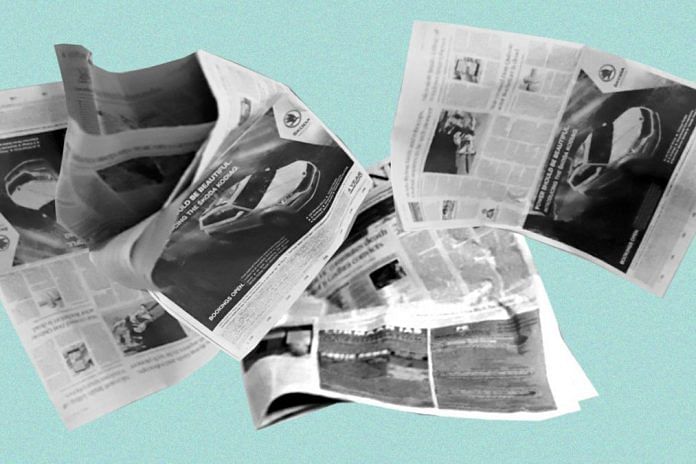In this excerpt from the book ‘A Game Changer’s Memoir’, ex-SEBI chief (Securities and Exchange Board of India) G.N. Bajpai revisits the times when, he writes, the Indian media published downright inaccurate and unverified news about the market regulator. In almost all three such instances mentioned below, media personnel who published or broadcasted these stories reluctantly admitted their acts of falsification after much investigation. Bajpai highlights the serious repercussions these stories had on the credibility of SEBI, and importantly, on those honest investors who stand to lose much from the rupturing of stock markets, as a result.
Run-in 1: the case of imaginary investigation
A prominent business news channel broadcasted the news that a big broker was being investigated by SEBI. This was not true, and SEBI had no intention of investigating the broker either. But this news created unnecessary panic among brokers in general and the management of that broking house in particular, who were on the path of pitchforking themselves into the league of biggies with big-time diversification. The television story also gave an opportunity to mischief makers to raise questions about SEBI’s methods and intentions. Such false news had been spreading for some time now. So I cut through ranks and straightaway invited the No.1 at the channel for a cup of tea—this is a euphemism used by the regulator to summon someone (here a leading media personality) for counselling and to question him on the news about the SEBI investigation (which even I was not aware of) by his channel. The news head stuck to his report, insisting that an investigation was indeed being carried out. He also alleged that someone from SEBI itself had shared this news.
‘Who told you this?’ I asked, concerned. ‘Tell me the name. I will get the man in front of you and then make him say it again,’ I replied.
Naming his source, according to him, was not possible, and understandably so. However, it was not acceptable to me that fake news was being broadcast. I had made up my mind to take the news channel head on and go to court over it if need be. However, after some discussions the journalist reluctantly accepted that the news had been wrong; the error was regretted on his media channel. Interestingly, in spite of this incident, my relations with him continued to remain cordial.
Run-in 2: the case of imaginary bribe-taking
One day I opened one of the prominent daily newspapers, only to find a news item to the effect that people at SEBI are corrupt and that SEBI officers take bribes. This was apparently a statement made by Ketan Parekh, who was in jail in Kolkata. Parekh was also saying that he had bribed SEBI officers, which he later denied. The article had made a very grave accusation but gave no proof or source for its claims. Once again I lost my cool. The editorial team of the newspaper was immediately approached and told to tell us who at SEBI were taking bribes. If they did not tell us, we would file a defamation case against the newspaper. We even sent a message across to them to apologize and publish a suitable correction negating the bribery accusations against SEBI officers. But everything fell on deaf ears. So SEBI issued a defamation notice.
The editor of the newspaper, (I got to know through someone and is unverified), was very angry about the defamation notice but was advised not pick up a fight with the SEBI. He was told that if SEBI filed a case and if the matter was dealt with by the courts, it would be the newspaper that would suffer greater damage as the people at SEBI were quite serious about the whole issue. But they could not produce the names of the bribe-taking officers because there were no such officers in the first place. So finally, with some reluctance, the newspaper regretted the news in their publication, saying the bribery accusations against SEBI officers were unverified.
Run-in 3: a case of blackmail
In another case, a broker came to me and told me that a journalist was trying to blackmail him; the journalist wanted Rs 25,000, failing which he would write a negative story about the broker. The scared broker had earlier paid a similar amount to the journalist, under the same threat.
I told the broker, ‘It is between you and the journalist and outside SEBI’s purview. SEBI won’t be able to step in. But you may go to the CBI and complain.’ He did not name the journalist or the media house. Even I did not ask him their names as the matter was anyway outside my purview.
A few days later, a journalist from a prominent economic newspaper was caught taking a bribe by the CBI. Whether it was the same journalist mentioned by the broker or someone else, I would never know. But these chain of events highlighted the practice of inaccurate, if not false, reporting by the media.
My biggest concern about the media, from the experiences I have described above, was that stories regarding the capital market, including those on SEBI, should be verified before they are published. I really had no problem if the stories were against SEBI or against me personally, as long as those were verified and correct. Stories alleging SEBI investigation against a big broker or a scrip, bribe-taking by SEBI, etc., create negative sentiments in the market and can lead to fluctation in stock prices, resulting in losses running up to crores of rupees.
If these reports are not true, the loss they cause to honest investors would be completely unfair. Such misreporting could also be used as a tool by unscrupulous players in the market to make unfair gains at the cost of general investors. In any case, such false news in the media were becoming an operational risk, damaging the efficacy of the market, which we were building so assiduously. Widespread escalation in the frequency of false news has the potential of becoming even a systemic risk, albeit of low order. So something had to be done to stop such unverified reports.
 This excerpt is from the book ‘A Game Changer’s Memoir’ and has been written by G.N. Bajpai. It was published in 2018 by Portfolio Penguin, an imprint of Penguin Random House.
This excerpt is from the book ‘A Game Changer’s Memoir’ and has been written by G.N. Bajpai. It was published in 2018 by Portfolio Penguin, an imprint of Penguin Random House.






